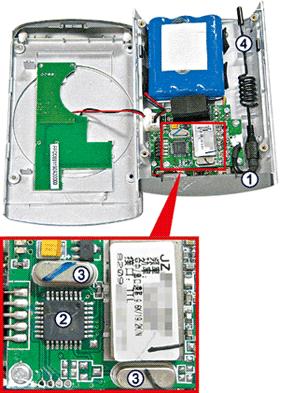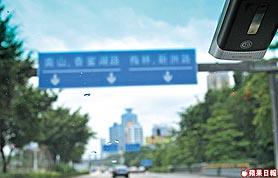
Careful what you say when driving between Hong Kong and China, the government may be listening. The Apple Daily, a Hong Kong news source, broke a story this week that “inspection and quarantine cards” installed in dual-license plate vehicles may be secretly spying on passengers. Upon opening and examining these windshield mounted cards, Apple Daily found complex electronics that local experts attest could record and transmit audio up to 20 km (~12 miles) away. If true, the device would allow officials in neighboring Shenzhen province to listen in on passenger conversations even while cars were in parts of Hong Kong. Apple Daily estimates that 20,000 of these cards may have been installed in Hong Kong cars since 2007. Learn more in the brief news video below. As many dual-license plate private cars belong to powerful businessmen, this massive surveillance project would have the potential to affect billions in financial deals. Shenzhen officials deny that the cards are used for spying purposes, but even if this particular accusation is false, the technology exists to make this surveillance nightmare a reality.
With all such controversial stories, I have to ask myself whether or not any of this is actually true. Unfortunately, the original Apple Daily story now seems to be missing on its proper website, and those wishing to read it must make due with Google’s cached version. The Epoch Times has a faithful summary of the article, and NTDTV and other Asian news channels have picked up the story. At the moment, however, Apple Daily seems to be the only source to have actually taken an inspection and quarantine card and opened it up to see what’s inside. Until we see further evidence that China managed to sneak 20,000 surveillance devices into Hong Kong cars under the guise of tracking commerce and enabling travel, we’ll have to label this whole affair as ‘alleged.’

As far as alleged surveillance strategies, however, this story has all the makings of an enjoyable Hollywood blockbuster: Shenzhen officials install these cards for free into Hong Kong vehicles to facilitate border crossings. Their dubious nature is first suspected by smugglers who discover that Shenzhen police are now detaining all of their transport vehicles, even the dummy ones. Eventually, intrepid news teams get wind of the debacle, open a device and show it to university scientists, and private investigators, who pronounce it as more than capable of transmitting up to 20 km, with effective ranges probably around 3-5km. Accusations made to the Shenzhen inspection and quarantine offices are met with ridicule and a slow fog of censorship seems to fall over the entire affair. Have John Grisham write the screenplay and cast Matt Damon in a lead role and you’d have a guaranteed money making film.
Considering the tight reign China maintains on their press and the indefatigable denials of bureaucrats, I doubt we’ll ever hear China confess it’s been spying on Hong Kong merchants (and other citizens). The truth, however, is that whether or not these cards were meant to facilitate a massive surveillance project, they easily could be used for just that. Small microphones, high efficiency batteries, tiny transmitters, and an extensive mobile device infrastructure mean that card-sized recorders aren’t just possible, they’re relatively cheap to make. And they’re going to get cheaper and better as technology improves. We’ve already seen projects aimed at making surveillance equipment lightweight and small enough to fit on a flying insect, can we really doubt they’ll be able to fit inside an RFID tag, or inspection sticker sometime in the near future?
Even if we’re too wily to be tricked into embedding ourselves with government listening devices, we’ll still be susceptible to advanced microphone arrays that can detect individual voices in huge crowds – effectively rendering any public place into a suitable habitat for audio surveillance. We could get ourselves into a massive spy vs. spy arms race with our governments, using ever more advanced technology to block their ever more advanced cameras and microphones, but I’m not sure how successful that strategy will be in the long run. Ultimately I think that citizens exercising control over their governments, setting standards for privacy, and ruthlessly punishing regimes that break those standards, is the only sustainable policy. The United Nations Human Rights Council, which seems poised to push for open and anonymous internet access as a key protection of freedom, would probably agree. Whether you favor a technological or political solution, we’d better start acting now. Today’s story out of Hong Kong has the ring of truth to it, and I’ve little doubt that the surveillance devices of tomorrow will make spying on 20,000 cars seem trivial in comparison.
[image credits: Apple Daily]
[source: Apple Daily, Epoch Times]



